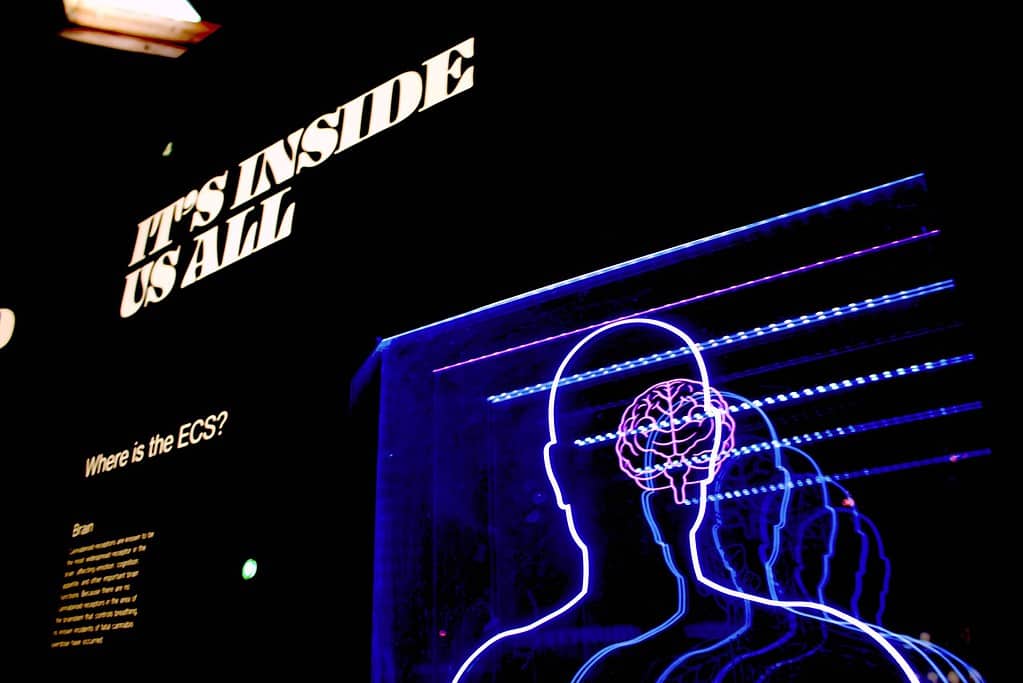When it comes to these everyday, innocuous tasks of life, like typing on our keyboards or reaching for a glass of water, we don’t actually put a lot of active thought into them. This is because of something called implicit memory. This type of memory, or unconscious memory is a particular kind of memory process that uses our past experiences as opposed to actual active thought.

When we wake up in the morning and reach for our toothpaste and toothbrush, do we actually think about it? Likewise, when we make that right onto the main street to finally reach our office, are we on autopilot or do we have to pause a minute, as if we’re solving a puzzle? Sometimes, your brain operates without you and does not require conscious input — this is called implicit memory.
Think about it like this: let’s say you’re a tourist in a new city. You navigate through the tiny and pretty streets using maps on your phone or ask strangers for directions. Contrast this with walking the roads of your hometown. Forget about maps, you probably won’t even notice reaching your destination.
It’s as if you’re on autopilot. You instinctively know where each road leads and have walked the same roads so many times. It’s as if there’s a protocol in your head.
It’s the same when you’re riding a bike or playing a musical instrument you’re good at. Your brain just autopilots things — it’s because of this implicit memory.
What is Implicit Memory?
Implicit memory is one of the two main kinds of long-term memory. This means that any implicit memories you generate last for a very, very long time. For example, some implicit memories last for days while others can span years or even decades.
As with most things that stick with us for a long time, implicit memories inform and influence our everyday behaviors. Most of our implicit memory-influenced behaviors or actions run unconsciously. We don’t even recognize or realize it half of the time because these memories don’t even require conscious effort. In fact, they don’t even need a lot of time. It takes time to build up implicit memories but once formed, they’re hard to get rid of and quick to recall.
For example, think of riding a bike. There’s a reason why it’s so easy for us to fall back into it. We unconsciously recall our past experiences of doing it and fall back into the same rhythm as when we last did it.

Memory’s a tricky and vast thing. No one kind of memory is self-contained and implicit memory is no exception. The basal ganglia, neocortex, cerebellum, and amygdala all participate in helping form implicit memories.
Implicit memory is divided into mainly three types of memory:
- Procedural memory: Practice makes perfect and procedural memory is the perfect advocate of it. It’s part of implicit memory responsible for recalling any learned skills or functions. Procedural memory is a kind of executive system. This means it doesn’t require active thought and can work on an unconscious and automatic level.
- Priming: Imagine someone asked you to think about blood. You’d picture the fluid of the blood, but you’d also immediately think of the color red. This is an example of priming. Priming, a type of implicit memory, is what happens when we use one type of stimulus, like colors or shapes, to recall another stimulus given later.
- Classical conditioning memory: This type of memory happens generally without effort or awareness. In classical conditioning memory, we learn to associate neutral stimuli (such as a sound or a light) with another stimulus (such as food), which creates a naturally occurring response (such as enjoyment or salivation).
Example: Imagine you’re asked to think of blood. Then, you’re asked to pick a color. Chances are you’re picking red because it’s been on your mind – suggested by the blood.
There are also other classifications of memory:
- Associative memory: Associative memory might be one of the most common of all kinds of implicit memory. This is because we acquire associative memories by making use of conditioning (Read: Pavlov’s dog and his famous bell). To acquire associative memories, we can use two methods of conditioning namely classical and operant conditioning.
- Non-Associative memory: Non-associative memory can actually be thought of as a subset of procedural learning or memory. It has two main aspects to it, habituation and sensitization.
- Habituation: You’ve lived in the city your whole life. All of a sudden you pack up and move to a port. At first, you’re perturbed by the noises of the incoming and outgoing boats but eventually, as time passes, you become habituated to it. Fast forward one year and the boats don’t even bother you anymore.
- Sensitization: Sensitization is easy to absorb as the opposite of habituation. Let’s use the same example, you move from the city to the port but instead of getting used to the noise of the boats and ships, you have a particularly stressful reaction to them every night. Worryingly enough, the reaction is overwhelmingly worse every night to the point that you decide that you’re going to move back to the city. This is because the stimulus of the boats’ noise evoked a sensitized reaction from you. This means that every instance of exposure to that particular stimulus will always be worse or more intense every time.
Before we explore exactly what implicit memory means, it’s probably simpler to go through some examples.
Implicit memory examples
- Typing on a keyboard. Initially, you need to look at the keyboard and make sure you familiarise yourself with the placement of the keys. Over time, as you keep typing and practicing, you end up being able to type without looking at the keyboard. (Procedural)
- Getting used to the tantrums of a crying baby on board a plane. (Habituation, Non-Associative)
- Riding a bicycle. When you learn to ride a bicycle, you acquire various motor skills and coordination abilities that help you maintain balance, pedal, steer, and control the bike’s speed. These skills are stored in your procedural memory system, allowing you to perform them automatically and without conscious thought once you’ve learned them. (Procedural)
- Reaching for salt and pepper in the kitchen. They’re always in the same place and you instinctively know where both are. When they’re not, your procedural memory makes you feel confused.
- You’re presented with a handful of grass. Immediately after, you’re tasked with drawing a landscape. Chances are, you’re going to draw a hill filled with grass as opposed to a drab desert or an icy tundra. (Priming)
- You’ve had a terrible experience of getting stuck in an elevator once. Ever since, you prefer taking the stairs instead however, in the unfortunate event that you’re forced to enter an elevator again, you can’t bear it and just need to get out. (Sensitization, Non-Associative)
- Remember that scene in Ratatouille, when the food critic, Anton Ego, finally tastes Remy’s ratatouille, and is instantly hit with memories of his childhood? In this instance, the stimulus (Ratatouille) is associated with Anton’s childhood as it was a dish his mother often prepared for him. (Classical Conditioning, Associative)
Implicit vs explicit memory

Now let’s get back to defining what implicit memory is — and the best way to do this is by comparing it with explicit memory.
Let’s go back to the keyboard typing examples. Let’s say you’re experienced at typing. You can type without looking (or thinking) at your keyboard but when it comes to remembering dates of the year or formulas for an exam, you need to pause and focus.
This is because when we type, we recall our implicit procedural memories. On the other hand, to remember a specific date for the history exam, you need to count on your explicit memory.
Explicit memory is exactly what it sounds like. Although it is a kind of long-term memory, it requires active and conscious recall. For instance:
- Remembering a friend’s birthday.
- Attempting to recall the song that played at your sister’s wedding.
- Trying (in vain) to remember the quadratic formula in the final minutes of an exam.
“Explicit memory is often referred to as ‘knowing what’ and implicit memory to ‘knowing how,'” said Sara Jo Nixon, professor and director of the Neurocognitive Laboratory at the University of Kentucky, and author of a recent study.
Instances such as these, are singular objects or instances in our memories as opposed to skills or traits that we can perfect with repetition, as is often the case with implicit memory.
Explicit memory can either be heavily grounded in feelings or emotions (episodic memories) or can be highly objective titbits of information like facts, dates, concepts, and names. In essence, the best way to sum up the difference between explicit and implicit memory is to illustrate an instance or circumstance in which we use both.
So explicit memory is what happens when you have to make an effort to recall something. If it requires conscious effort, it’s explicit. If it’s implicit… well, it’s implicit memory.
Let’s take another example. Imagine you’re on your way to work. Whether you bike, walk, or drive to work is inconsequential. The route is always the same and as soon as you leave your house, you’re on autopilot. The magic of implicit memory strikes you.
Out of nowhere, as you’re walking along one of the avenues you take daily and someone stops you and asks you this, “What’s the name of the lane opposite to this one?”
You’ll have to pause, draw from your explicit memory, and give them an answer.
Recent studies on implicit memory
Until the 1960s, there wasn’t a lot of data or any genuine attempt to further research into implicit memory yet this all changed when scientists realized that patients with amnesia could retain their implicit memories. With this striking discovery, research into implicit memory, and on a larger scale – all types of memory accelerated.
We now also know that implicit memory (in particular priming) is also spared from cognitive aging. It stays optimistically stable throughout our entire adulthood while explicit memory degenerates.
A 2017 study found that implicit memory may be linked to conditions such as dyslexia, and in people suffering from dyslexia, implicit memory is decaying faster.
“While dyslexics are mainly diagnosed according to their reading difficulty, they also differ from non-dyslexics in performing simple perceptual tasks,” said first author Sagi Jaffe-Dax.
“Our lab previously found that this is due to ‘poor anchoring’, where dyslexics have an inefficient integration of information from recent stimuli, collected as implicit memory. This memory typically forms ‘anchors’ that provide specific predictions that clarify noisy stimuli, and we wanted to see why this is not the case in dyslexics,” said co-author Professor Merav Ahissar of the Psychology Department and The Edmond & Lily Safra Center for Brain Sciences.
In 2013, researchers showed that overthinking may indeed cause you to perform worse by impairing your implicit memory. All in all, studies strongly suggest that implicit and explicit memory form and act in very different ways, but we’re still learning new things about them every year.
Figuring out any unconscious process of the brain is bound to be a tough nut to crack. But it’s a worthwhile endeavor. The study of memory, more specifically unconscious or implicit memory is a veritable minefield of data. The more this field of research progresses, the more we can understand ourselves — and how to become better and healthier.






